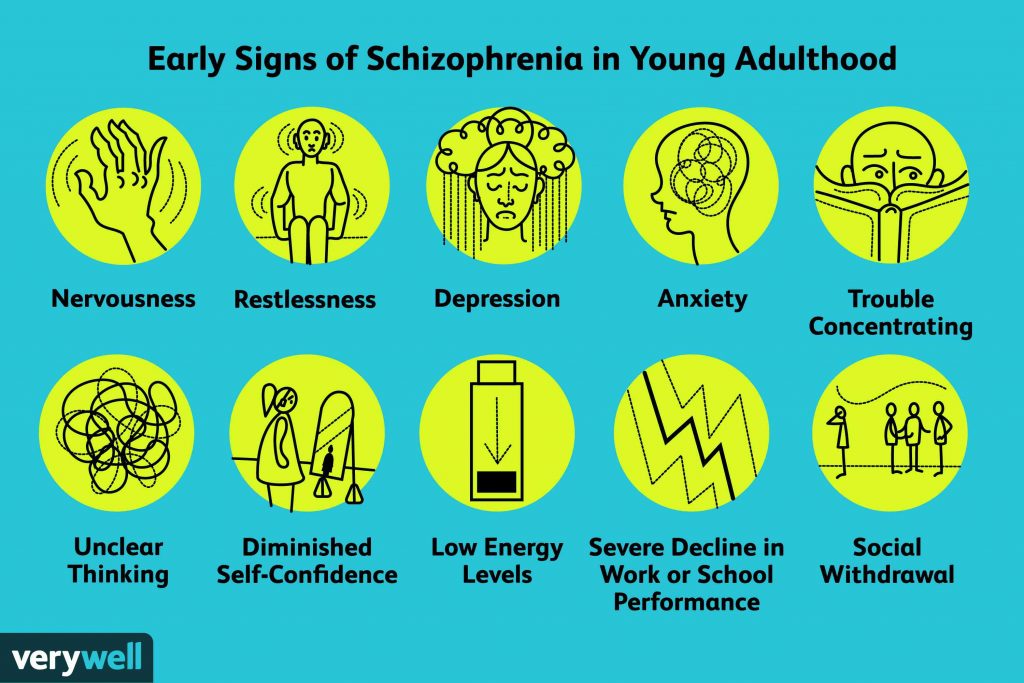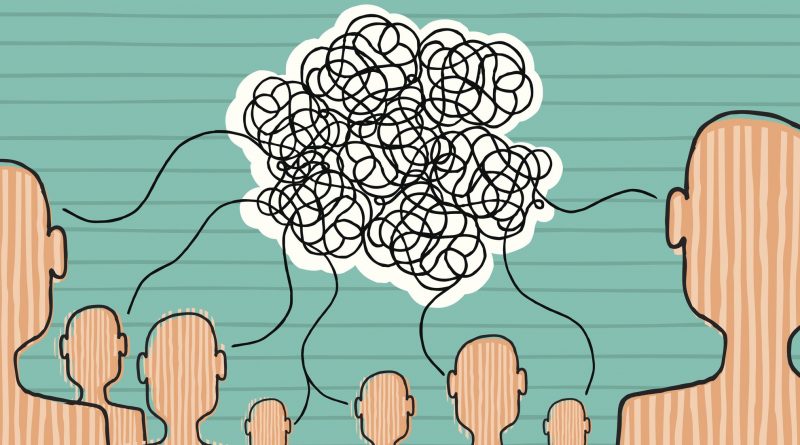Schizophrenia – What does it mean to have a split mind disorder and how is the current stigma around the disorder causing more harm than ever before?
Schizophrenia is a serious mental health problem, that causes changes to how people think, feel and behave. The disorder is known as a split mind disorder and can cause hallucinations, and a range of other symptoms which stop many from being able to live their normal day to day life. A hallucination is when a person starts to see things or hear voices that are not observed by others. Schizophrenia affects approximately 24 million people or 1 in 300 people worldwide. The common symptoms of the disorder are delusions and hallucinations.

Although it is not very common, those suffering with the disorder, if not treated, may adopt severe complications such as depression, misuse of alcohol or other drugs and social isolation. Those who suffer from schizophrenia may also adopt aggressive behavior in response to those around them who do not understand their hallucinations and delusions. The “Inside Schizophrenia” podcast explores the disorder and its impact on people, with the host describing schizophrenia as “A disorder that cannot be explained without explaining despair”.
Schizophrenia is also a disorder that is frequently brought up in court-related cases where the perpetrator has committed murder. The perpetrator’s team will argue that perpetrator committed the murders under a severe case of psychosis and therefore do not remember how and why they committed the action. They will use the mental disorder schizophrenia to try and show the court how the perpetrator cannot be held accountable for their actions and should therefore not receive a punishment for their crimes. This tactic can be found in many cases, and cases where the suspects have been able to walk free or receive a short sentence at a mental health facility. However, this tactic has caused many people to view people suffering with the disorder as dangerous and cruel, while on the contrary many of those living with the disorder are normal people, who are more likely to be victims of violence rather than being a perpetrator themselves. To understand the stigma formed around those suffering with schizophrenia, we must understand how those living with the disorder live their day-to-day lives.
What are the symptoms people with schizophrenia experience?
The symptoms of Schizophrenia are often divided into three categories – Positive, Cognitive and Negative.
The Positive symptoms include experiencing delusions, hallucinations and abnormal body movements. Other symptoms include the person having trouble completing full sentences or not being able to stay on one topic. People suffering with schizophrenia may also experience motion difficulty or extreme agitation. These symptoms of not being able to move properly are called catatonia.
The other category of symptoms is that of negative symptoms which include having trouble showing emotions and experiencing social withdrawal. The person may also experience the loss of other normal functions such as speech, which is called alogia. A person with affective flattening disorder may have trouble expressing emotions through facial expression and this results in the person not being able to show pain, happiness or even smile.
The cognitive category involves difficulty processing information and making decisions during day-to-day life. The disorder also causes difficulty for the person to remain attentive, remember important information, behave appropriately and to be able to keep up with daily activities such as schoolwork and chores.
What are the important steps in diagnosing schizophrenia in order to receive treatment?
Schizophrenia is not preventable but the person living with the disorder can receive help in different ways depending on the severity of the case of schizophrenia.
When a person is diagnosed with schizophrenia, the first thing they will be given is a physical exam to check if the hallucinations or delusions are caused by another factor, for example drugs, medicine or a medical condition. The person will then also be asked about their family medical history to see if any signs of schizophrenia are present.
What are the possible treatments for schizophrenia?

Some people may need to be placed in an in-patient care facility, but others may be able to live at home and maintain a normal life. Other treatments include taking medication, attending therapy, going to emotion skills training or other forms of therapy such as CBT. CBT is a form of cognitive behavioral therapy which helps to reduce symptoms of various mental health conditions by breaking down the patients’ problems.
The person may also be encouraged to attend electroconvulsive therapy if the medicine provided is not effective. This type of therapy includes a procedure that involves putting the patient to sleep with the help of anesthesia and then using a small electric current to pass through the brain. These currents cause a therapeutic seizure that lasts 1 to 2 minutes. Electron conclusive therapy has in the past helped many with severe depression disorders.
Why are there so many misconceptions related to those who live with the disorder?
Those who live with schizophrenia are often seen as aggressive and as criminals. Many of these misconceptions have been caused by the false portrayal of schizophrenia in movies and series. On TV as in movies, for example Black Swan, Words on Bathroom walls and Shutter Island, characters who suffer from the disorder are often portrayed as crazy and are even locked up in mental health hospitals. These false portrayals cause many to believe that people with schizophrenia act like this in real life and therefore are scared to meet someone with the disorder. When in reality there are many people with the disorder who go unnoticed. A young college student, Cecilia McGough, revealed in her Ted Talk “I am not a monster – Schizophrenia”, that after years of living with schizophrenia she managed to get “very good at just pretending not to see what she was seeing, or ignoring them” and that “getting help was the best decision she ever made”.
Misconceptions of those who have disorder include them being lazy, bad parents, aggressive, psychopaths and not able to live outside mental health hospitals. A study shows that those with schizophrenia pose a higher risk to themselves than those around them with the rate of suicide being twenty times higher than the those who do not have schizophrenia. Another misconception often found in TV shows is that people with the disorder are the only people who experience delusions and hallucinations, while in reality, people suffering from different disorders such as Parkinson’s disease and Alzheimer’s, have similar symptoms.
Another common misconception is that a person is born with schizophrenia. This is false and in reality, it is most likely that the person will develop the disorder between the ages of 16 to 25.
What are some of the possible causes of schizophrenia?

Schizophrenia does not have a sole cause but is instead often linked with other mental conditions such as bipolar disorder, depression and anxiety.
There are no identified genetic causes that have been linked to schizophrenia but the presence of the disorder in the family of the patient can cause the development of schizophrenia in later generations. For example, having an identical twin who has schizophrenia increases the likelihood of the other twin having the disorder. The disorder has also been linked to causes such as the misuse of substances during lengthy periods of time, birth issues such as not receiving enough oxygen at birth or experiencing traumatic events.
Many observations of the brain have helped scientists analyze how the structure and the number of neurotransmitters is also considered as a root cause of the diagnosis of schizophrenia. Whilst further research is needed, it is believed that those who have the disorder have a lower number of neurotransmitters such as dopamine which are crucial for the messaging of information between the different cells in the brain.
Scientists also believe that the smoking of cannabis during early years can cause an increase in the chances of developing the disorder in adulthood. Understanding the causes of schizophrenia plays an important role in finding the root problem of the disorder. Some scientists have suggested that the disorder may be a brain disease but are still researching to see if this may be the case. Philosopher Marshall McLuhan explains that “The cause of schizophrenia remains one of psychiatry’s enduring mysteries—complex, multifaceted, and yet to be unraveled. »
Who were the first patients to be diagnosed with Schizophrenia?

The term schizophrenia was first coined by a Swiss psychiatrist called Eugen Bleuels, but the disorder was reported to have been investigated since the ancient Egyptian times. Texts from the Egyptian times show medical studies, where the doctor has reported to have visited a patient that has symptoms of irrational behavior and seeing figures that only they can see. Even Joan of Arc was believed to have suffered from the disorder.
Bleuels came up with his definition in 1908, to try to help him understand the symptoms that one of his patients had described. The patient said he had trouble separating his thinking, personality and memory, and he stated that he felt as though he was going insane.
Many disagreed with Bleuels and argued that what his patient was experiencing was Alzheimer’s. Bleuels also believed that the disorder could only be inherited – a conclusion that we now know to be false.
During the World War 2, many patients with schizophrenia in countries occupied by the Nazis were killed during the “T4” project because they were seen as unfit for life and detrimental to the economy. Many of these patients were treated and killed in the same manner as prisoners in concentration camps such as Auschwitz. During this time, the Germans also started to experiment on schizophrenic patients, performing different forms of surgeries which they claimed to be forms of treatment, but which in reality were severe cases of abuse. They performed surgeries such as lobotomies, which involved removing brain tissue to provide new pathways for the brain to be able to work. Other illegal surgeries included injecting a daily dose of insulin to cause the patient to remain in a constant coma.

Nowadays the most common medications include chlorpromazine which was the first form of antipsychotic that was used in hospitals in the USA in 1950. Today, while schizophrenia patients are finally getting treated, with the treatment they deserve, people with schizophrenia are still 3 times more likely to die earlier than the total population. This is because of suicidal issues, diseases and other health problems. For example, patients have issues associated with weight gain, due to an increase in appetite caused by the medications taken.
People with schizophrenia still often experience abuse and other human right violations during their time as an inpatient and also in day-to-day life. The rise of stigma against the disorder continues to spread false information causing more and more people suffering from schizophrenia to feel socially excluded and discriminated against. There are many organizations such as Students with Psychosis, NAMI and Supportiv, that exist to help people with Schizophrenia. However, there is still a huge amount of work that needs to be done to help everyone struggling with the disorder in our society. Schizophrenia is the most acute mental disorder but is also the disorder that has the least number of resources available to treat it. We are still very far from identifying the causes that can lead to an individual developing schizophrenia.
Zoe ROSMARUS / S6ENB / EEB1 UCCLE




